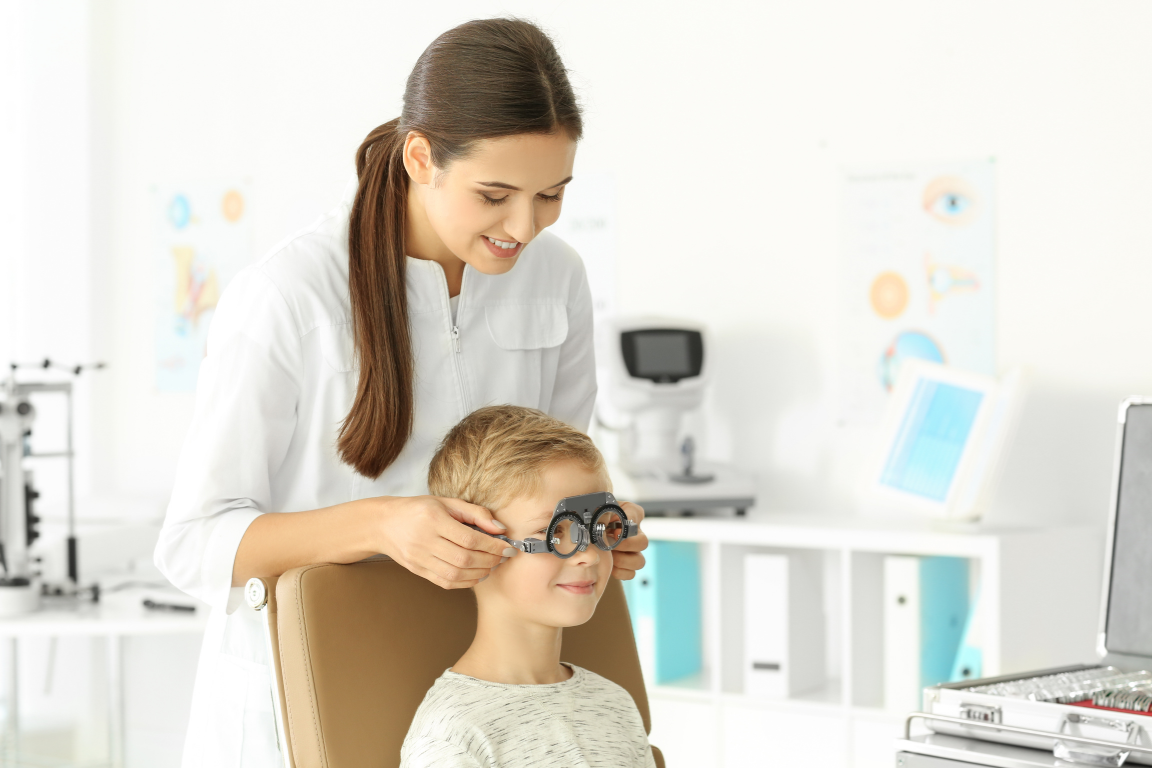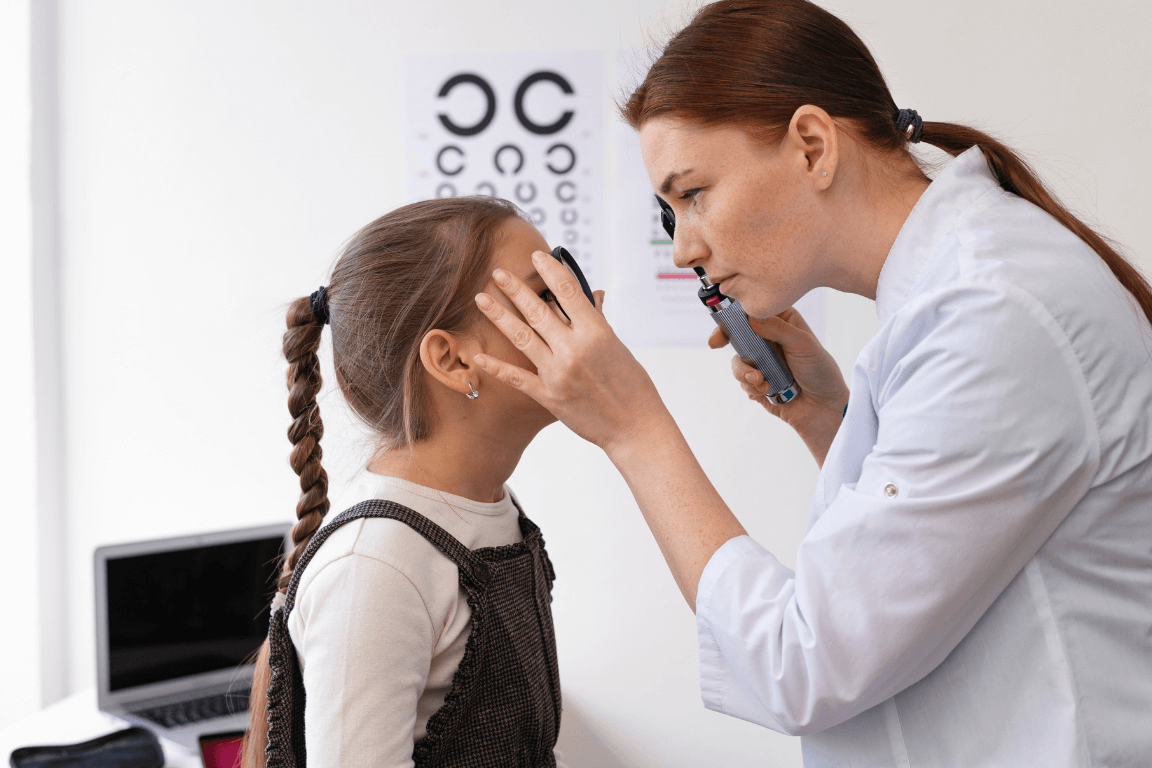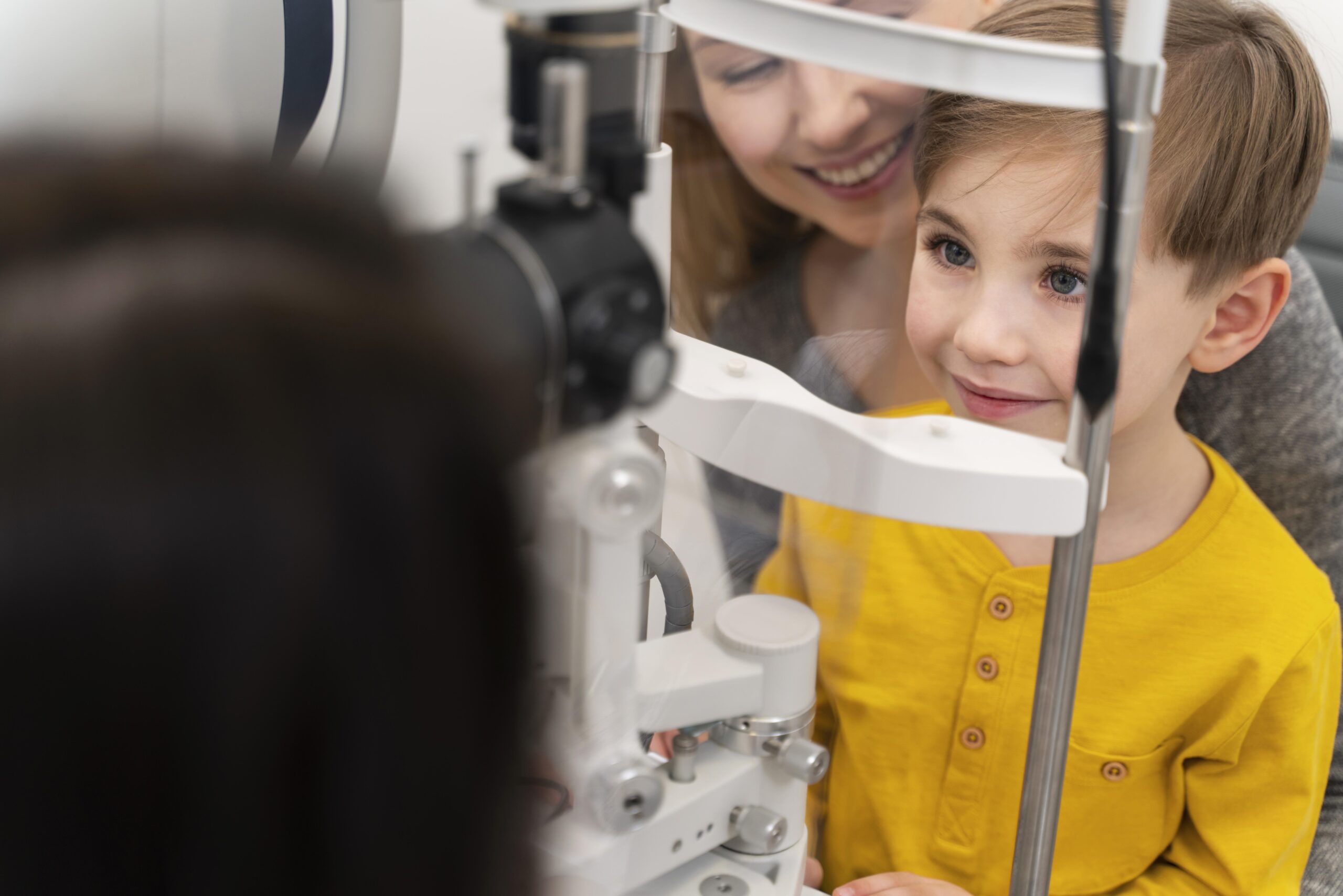Two topics that have received an increasing amount of attention in the eye care world lately – myopia and dry eye disease. Given the complex nature of ocular health and vision (and of the entire human body), it should come as no surprise that research has noted a correlation between myopia and dry eye in the paediatric population. As eye care professionals, managing a patient well means it’s not enough to single out just one issue while ignoring the others. Keep reading to learn about the link between dry eye disease and myopia in children, and how to manage them both.
The Reality of Dry Eye in Myopic Children
Firstly, let’s start by revising those startling statistics about the worldwide epidemic that is myopia. The rates of myopia among children are increasing globally, with some Asian populations reporting a prevalence of over 80%.¹ The oft-quoted prediction about the future of myopia is that around 50% – approximately 5 billion people – will be short-sighted by the year 2050.² Though this may bode well for those who are in the business of making a living from dispensing glasses and contact lenses, it is not a favourable prediction if you’re one of the 5 billion who are myopic.
Unlike progressive myopia, dry eye disease in the paediatric population is much less commonly reported. However, this is thought to not necessarily be truly due to a lower incidence of dry eye disease in children, but rather to challenges in diagnosing the condition in this population. Children can be less likely to identify and report dry eye symptoms³ while also being more challenging to examine thoroughly.⁴
Several predisposing factors for dry eye in the paediatric population have been identified. They include: ⁵,⁶
- Ocular allergies and the medications used to treat them. Around 30% of children suffer from hay fever, which often include the symptoms of itchy, dry eyes. Unfortunately, while some children experience only seasonal hay fever in spring and summer, perennial hay fever affects sufferers year-round.⁷ A common treatment for hay fever is the use of oral antihistamines. However, this drug class is known to reduce tear volume and worsen dry eye symptoms.⁵
- Systemic medications. Some medications used among patients under 18 years of age include isotretinoin for acne, tricyclic (TCA) and selective serotonin reuptake inhibitor (SSRI) drug classes of antidepressants, and anti-anxiolytics. TCA and SSRI medications exhibit anticholinergic effects, while isotretinoin may induce meibomian gland dysfunction, all of which can exacerbate dry eye.
- Digital device use. Excessive screentime is linked to both increasing myopia and dry eye symptoms.⁵ In particular, using a smartphone is more strongly correlated to dry eye disease compared to other types of devices.⁸
How are Myopia and Dry Eye Disease Related?
Children with a risk of progressive myopia may also be at a greater risk of dry eye disease for a few reasons. This means it’s important to be on the lookout for symptoms and clinical signs of dry eye in the patients you’re managing for myopia.
There is suggestion that binocular vision disorders, myopia, and dry eye symptoms are all connected. Dysfunctional binocular vision leads to visual discomfort, which leads to dry eye disease. One study found a strong correlation between self-reported dry eye symptoms during contact lens wear and convergence insufficiency symptoms, even more so than a correlation to clinical dry eye signs. Among study participants who were myopic soft contact lens wearers, almost half had a binocular vision disorder, most commonly pseudo-convergence insufficiency.⁹
Higher order aberrations (HOA), choroidal thickness, and axial length have also all been implicated in the connection between myopia and dry eye disease. Children with rapidly progressive myopia are found to have higher total ocular HOAs; increased HOAs are associated with a lower tear film breakup time. Tear breakup time is also found to be positively correlated to choroidal thickness (that is, increasing choroidal thickness is associated with improved tear breakup time), while choroidal thickness is inversely related to axial length (that is, as axial length increases during progressive myopia, choroidal thickness decreases).¹⁰ If understanding all that takes a little too much mental gymnastics, just know that the general gist is that myopia means increased HOA, lower choroidal thickness, and longer axial length, which are all (directly or indirectly) associated with lower tear breakup time.
Myopia control strategies themselves, namely those involving atropine and contact lens wear, can contribute to dry eye symptoms in paediatric patients. Soft contact lenses are a well-established risk factor for dry eye.¹¹ However, when it comes to paediatric populations specifically, there is currently not much in the literature. The information available seems to indicate that soft contact lens wear bothers children less when it comes to dry eye compared to adults, with one study finding that less than 5% of children reported dry eye compared to over 56% of adults.¹² Though this may imply that soft contact lenses should not be a concern for myopia management in children, optometrists should remember that children are less likely to report dry eye symptoms even if they experience them.³ Orthokeratology lenses have also been noted to be associated with incomplete blinking¹³ and tear film instability¹⁴. Dryness and ocular irritation from atropine use may be due to the preservatives in the formulation rather than the active ingredient.¹⁵
Tips for the Management of Dry Eye in Myopic Children
Managing dry eye disease in myopic children can take some initiative, particularly as the first step is remembering to assess all children for signs and symptoms of dry eye. Dry eye disease is difficult to treat if it’s undiagnosed! Once you’ve established that dry eye is a problem, here are some other tips to manage it.
- If atropine for myopia management appears to be a contributing factor, consider preservative-free unit doses.
- Dry eye signs and symptoms does not necessarily preclude the child from using contact lens myopia control strategies but if irritation is a concern, consider using daily disposables or adding a regime of tear supplements.
- Suggest topical antihistamine eyedrops over oral antihistamines if appropriate.
- If other systemic medications are thought to be exacerbating dry eye symptoms, communicate with the prescribing doctor to see if an alternative medication or dosage might be acceptable.
- Counsel the patient and parent about healthy screentime habits. More tips on handling digital eyestrain can be found here.
- Assess all patients undergoing myopia management for binocular vision disorders. This is important not only because binocular vision can contribute to dry eye symptoms, but certain myopia control treatments can alter binocular vision function.¹⁶
Summary
Asking about or assessing for dry eye symptoms in all children, not just those with myopia, should be part of a paediatric eye exam. However, it may possibly be even more pertinent to do so for myopic children. The contribution of myopia management strategies to dry eye and ocular discomfort should not be ignored, especially as it may lead to poor compliance and ineffective myopia control.
References
- Baird, P.N., et al., Myopia (Primer). Nature Reviews: Disease Primers. 2020;6(1).
- Holden BA, et al. Global prevalence of myopia and high myopia and temporal trends from 2000 through 2050. Ophthalmology. 2016;123:1036–1042.
- Han SB, Yang HK, Hyon JY, Hwang JM. Children with dry eye type conditions may report less severe symptoms than adult patients. Graefes Arch Clin Exp Ophthalmol. 2013 Mar;251(3):791-6.
- AAO. Are We Missing Dry Eye in Children? https://www.aao.org/. 2012. Available at: https://www.aao.org/eyenet/article/are-we-missing-dry-eye-in-children#:~:text=The%20causes%20of%20dry%20eye,Evaporative%20eye%20disease. (Accessed October 2023).
- Eyes on Eyecare. The Link Between Myopia and Dry Eye in Paediatric Patients. https://eyesoneyecare.com/. 2022. Available at: https://eyesoneyecare.com/resources/link-between-myopia-dry-eye-pediatric-patients/. (Accessed October 2023).
- Myopia Profile. Dry Eye in Myopia Management. https://www.myopiaprofile.com/. 2021. Available at: https://www.myopiaprofile.com/articles/dry-eye-in-myopia-management. (Accessed October 2023).
- The Royal Children’s Hospital Melbourne. Hay fever. https://www.rch.org.au/. Available at: https://www.rch.org.au/kidsinfo/fact_sheets/hay_fever/#:~:text= Hay%20fever%20can%20also%20occur,asthma%2C%20eczema%20or%20food%20allergy. (Accessed October 2023).
- Moon JH, Kim KW, Moon NJ. Smartphone use is a risk factor for pediatric dry eye disease according to region and age: a case control study. BMC Ophthalmol. 2016;16(1):188.
- Rueff EM, King-Smith PE & Bailey MD. Can Binocular Vision Disorders Contribute to Contact Lens Discomfort? Optom Vis Sci.2015;92(9):e214-21.
- Hazra D, Yotsukura E, Torii H, Mori K, Maruyama T, Ogawa M, Hanyuda A, Tsubota K, Kurihara T, Negishi K. Relation between dry eye and myopia based on tear film breakup time, higher order aberration, choroidal thickness, and axial length. Sci Rep. 2022;28;12(1):10891.
- Markoulli M, Kolanu S. Contact lens wear and dry eyes: challenges and solutions. Clin Optom (Auckl). 2017;15;9:41-48.
- Greiner KL, Walline JJ. Dry eye in pediatric contact lens wearers. Eye Contact Lens. 2010 Nov;36(6):352-5.
- Zeng L, et al. Tear Lipid Layer Thickness in Children after Short-Term Overnight Orthokeratology Contact Lens Wear. Journal of Ophthalmology. 2020:1-9.
- Cho W.-H, et al. Analysis of tear film spatial instability for pediatric myopia under treatment. Scientific Reports. 2020;10:14789.
- Coroi MC, Bungau S, Tit M. Preservatives from the Eye Drops and the Ocular Surface. Romanian Journal of Ophthalmology. 2015;59(1):2-5.
- Myopia Profile. Four reasons why binocular vision matters in myopia management. https://www.myopiaprofile.com/. 2021. Available at: https://www.myopiaprofile.com/articles/why-binocular-vision-matters-in-myopia-management. (Accessed October 2023).





